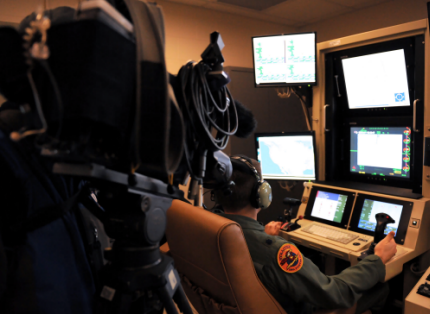Air Force: Pilots will fly by remote on many future missions
RPA vector report covers current operations and a future vision for remotely piloted and autonomous systems.

The Air Force expects to greatly increase its use of unmanned systems in the next 25 years, with remotely-piloted aircraft taking over some missions traditionally performed by manned aircraft, according to a recently released report titled RPA Vector.
The report discusses the future of remotely-piloted aircraft (RPA) and the potential of small unmanned aircraft systems, covering concepts and capabilities that will be required within the next quarter-century. The document gives private industry a heads-up on what the Air Force will be looking for in the future.
The Air Force envisions that RPA will be integrated across the air, space and cyberspace domains while autonomous systems increase efficiency and operational advantages. The service also is looking to increase the number of interoperable systems through open architecture.
Open architecture, “will enhance competition, lower life-cycle costs, and provide warfighters with enhanced unmanned capabilities that enable commonality and joint interoperability on the battlefield,” according to the report.
The report covers both current operations and future concepts. Some key specific findings include:
- The Air Force will begin looking at alternatives to commercial satellite communications as a means to control UAVs. The Air Force may also begin to explore the use of inclined-orbit SATCOM, which uses older satellites at a cheaper price.
- Spectrum management will become increasingly important as governments around the world are pressured to sell off spectrum space to commercial entities. One possible solution introduced at the World Radiocommunications Conference 2012 is a dedicated band for RPAs. Dynamic spectrum access, the ability to quickly switch frequency bands, will also become a critical capability in the future.
- The Air Force will have to support advancements to optimize bandwidth use and increase bandwidth efficiency. Compression technology and onboard storage can be used to ease bandwidth demand.
- Assured communications will continue to be a focus as the Air Force looks for more transparent methods of encryption and for navigation and timing capabilities in GPS-denied environments.
- RPAs will continue to contribute to the Air Force’s Joint Aerial Layer Network, working with industry to identify networking challenges and capabilities.
In terms of UAV capabilities, the service is planning to have unmanned systems take over missions traditionally conducted by manned aircraft. Missions such as air superiority, mobility of special forces, space superiority, ISR missions, personnel recovery, medevac, air refueling, airlift, and global precision attack could be conducted by RPAs in the future.
Nuclear strikes are most likely off the table for UAVs, however, unless safeguards are developed. Even then, they may not be considered for those missions, according to Air Force Times.
Choosing unmanned or manned aircraft for some missions is a decision that will have to weighed carefully, the report says,
“As an example, some questions to consider when evaluating manned versus unmanned options: Does the mission reaquire extreme endurance? Does the mission require a high level of risk (whether environmental risk, such as a contaminated area, or operational risk, such as an integrated air defense system [IADS])? Does the risk and cost of losing an aircraft outweigh the mission it was designed to perform?” the report says. “These examples illustrate the importance of considering manned or unmanned alternatives where appropriate and pursuing the appropriate course based on analysis and affordability. This will allow the Air Force to achieve better strategic focus while maximizing cost efficiencies in a fiscally constrained environment.”




